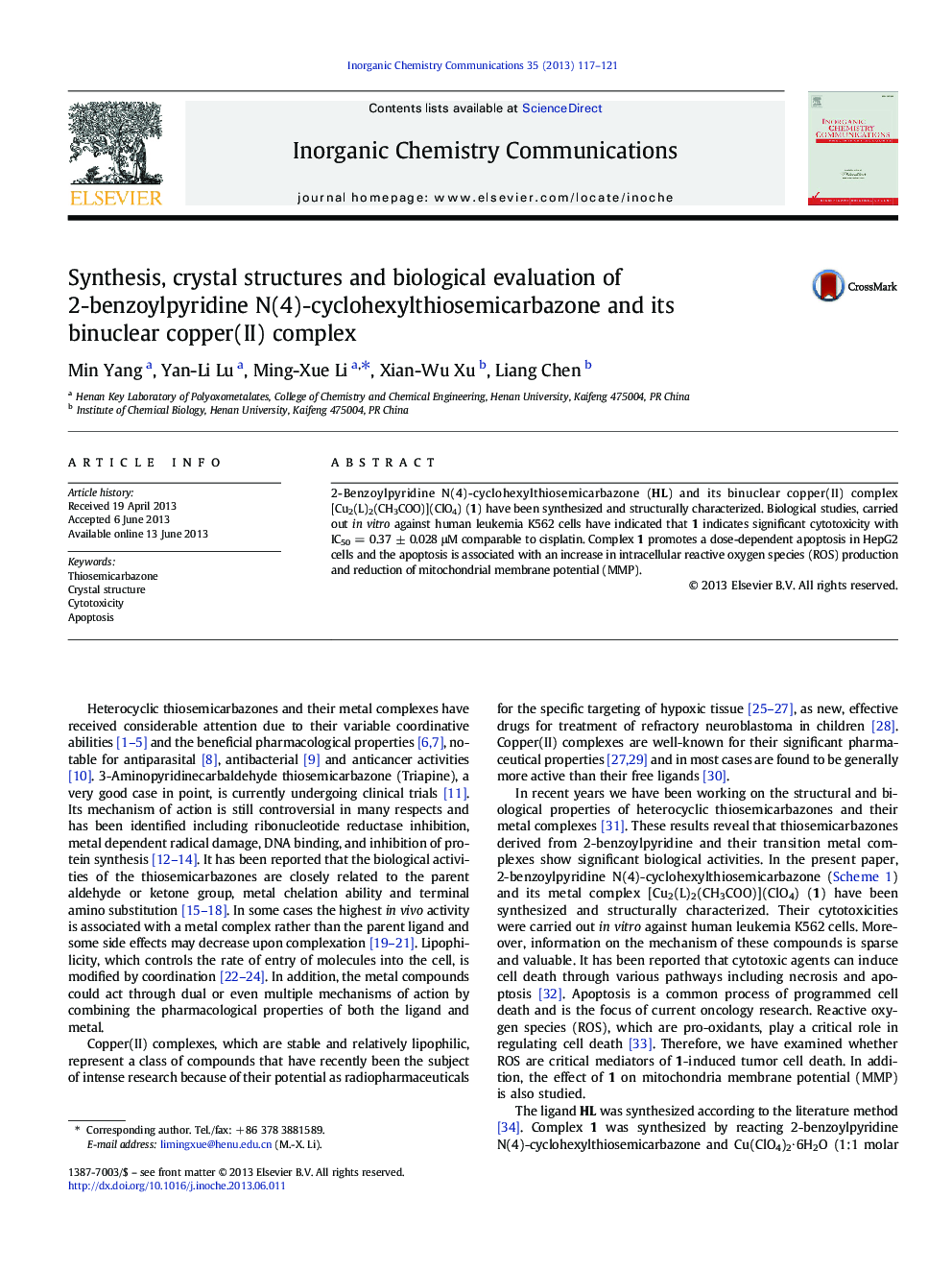| کد مقاله | کد نشریه | سال انتشار | مقاله انگلیسی | نسخه تمام متن |
|---|---|---|---|---|
| 1303840 | 1498955 | 2013 | 5 صفحه PDF | دانلود رایگان |

• Binuclear copper(II) complex 1 with two thiosemicarbazone ligands was synthesized.
• 1 indicates significant cytotoxicity with IC50 = 0.37 μM against K562 cells.
• Its possible apoptotic mechanism has been evaluated.
• These promising results are encouraging its further screening in vitro and in vivo.
2-Benzoylpyridine N(4)-cyclohexylthiosemicarbazone (HL) and its binuclear copper(II) complex [Cu2(L)2(CH3COO)](ClO4) (1) have been synthesized and structurally characterized. Biological studies, carried out in vitro against human leukemia K562 cells have indicated that 1 indicates significant cytotoxicity with IC50 = 0.37 ± 0.028 μM comparable to cisplatin. Complex 1 promotes a dose-dependent apoptosis in HepG2 cells and the apoptosis is associated with an increase in intracellular reactive oxygen species (ROS) production and reduction of mitochondrial membrane potential (MMP).
2-Benzoylpyridine N(4)-cyclohexylthiosemicarbazone (HL) and its binuclear copper(II) complex [Cu2(L)2(CH3COO)](ClO4) (1) were synthesized and characterized. 1 indicates significant cytotoxicity with IC50 = 0.37 ± 0.028 μM against human leukemia K562 cells and promotes a dose-dependent apoptosis in HepG2 cells. Its possible apoptotic mechanism has been evaluated.Figure optionsDownload as PowerPoint slide
Journal: Inorganic Chemistry Communications - Volume 35, September 2013, Pages 117–121